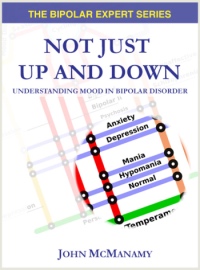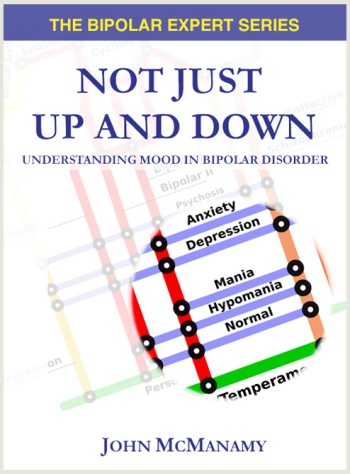The World According to DARPP
 |
A single molecule may prove to be the brain's Rosetta Stone.
|
DARRP and brain networks. It has been called the brain’s master switch. It is central to the function of one major neurotransmitter system and is vital to the modulation of at least one more. For a protein that wasn’t discovered until 1983, that’s a pretty tall order.
DARPP-32 is the little guy’s name. In 2000, its discoverer and principal "figure-outer," Paul Greengard PhD of Rockefeller University, shared the Nobel Prize in Medicine with Eric Kandel MD of Columbia University and Arvid Carlsson PhD of Göteborg University. The Nobel Academy cited their work as having "truly changed our understanding of brain function."
Indeed, if you want to learn a bit on how the brain works, there is no better case study than DARPP-32.
My New Book!

Purchase now.
Synaptic Transmission
In his Nobel lecture, Dr Greengard explains there are two principal means for how the 100 billion cells in the brain talk to each other – fast and slow synaptic transmission. Fast synapses (gaps between neurons) are roughly divided into excitatory and inhibitory, with glutamate as the main excitatory neurotransmitter and GABA as the main inhibitory neurotransmitter.
When glutamate binds to its receptor, positively-charged sodium ions rush into the target cell, resulting in an excitatory signal. Think of glutamate as the neuron’s wake-up call. The neurotransmitter has been linked to memory and cell maintenance, but too much excitement can lead to the type of cell damage that results in strokes and various neurodegenerative diseases. Glutamate gone wild may also feature in mood disorders.
GABA is the yin to glutamate’s yang. When GABA binds to its receptor, we get negatively-charged chloride ions that cause an inhibitory signal inside the cell that corresponds to a little night music. Benzodiazepines (and alcohol) can enhance GABA’s anti-anxiety effects.
Slow synaptic transmission, on the other hand, is far more complex and accounts for virtually all of the rest of neurotransmitter activity. One slow-acting neurotransmitter is dopamine. Dopamine binds to one of two main dopamine receptors on the target neuron, which activates an enzyme in the membrane that in turn stimulates the "second messenger" cyclic AMP inside the neuron. This molecule then activates PKA, a "protein kinase" that is responsible for "phosphorylation," a chemical process central to the operation of the cell’s numerous molecular signaling pathways. These pathways account for much of the cell’s business getting done.
Dr Greengard points out that today we regard all this as scientific dogma. But not too long ago, he explains, matters were extremely contentious. This had to do with biophysicists in physiology departments who believed everything significant about the brain could be explained in terms of electric signaling while biochemists in biochemistry departments saw the brain as little more than homogenized liver and weren’t particularly interested in its function. The two camps rarely spoke to one another, and when they did they never had nice things to say.
A Dopamine Interlude
Dopamine was discovered by Dr Greengard’s co-laureate, Dr Carlsson, in 1953. The neurotransmitter is involved in four major brain diseases, including schizophrenia, Parkinson’s, ADHD, and drug use. It is also central to reward and pleasure, plays a major role in working memory and motivation, and is implicated in mood disorders. Not surprisingly, researchers and executives at pharmaceutical companies tend to think of mental and neurological illness as some form of dopamine dysregulation disease. Many of their current products target dopamine, albeit in a rather clumsy push-pull manner.
On the push side is L-dopa, a precursor to dopamine that is used in treating Parkinson’s. The catch is that ramping up the dopamine levels may result in psychosis. Various stimulants, legal and illegal, also work by enhancing dopamine.
On the pull side, we have antipsychotics. One catch is that blocking out the dopamine can result in the type of tardive dyskinesia symptoms that very much resembles Parkinson’s. Another catch is that starving neurons of dopamine may result in the loss of mental alertness and pleasure – the type of mind states that stimulants, with singular imperfection, seek to address.
Investing in the development of better dopamine meds, then, is a no-brainer pharma business strategy.
Enter DARPP-32
DARPP-32 is found mainly in neurons that utilize GABA as its main neurotransmitter. By far most of these are located in the striatum, part of the subcortical area of the brain situated above the brainstem. From the striatum, many of these neurons project into other areas of the brain.
Dr Greengard describes DARPP-32 as "a Rosetta Stone for understanding the interactions of dopamine with other neurotransmitters, therapeutic drugs, and drugs of abuse." The term is an acronym for "dopamine and cyclic AMP regulated phosphoprotein of molecular weight 32 kDA," but you probably already figured that out.
The molecule isn’t called a phosphoprotein for nothing. Through one of its amino acids (threonine 34), DARPP-32 can be switched on through phosphorylation or switched off through dephosphorylation (and further regulated by regulating the regulation). Just to make things more interesting, three more sites on DARPP-32 are primed for phosphorylation.
So, depending on how DARPP-32 gets its phosphate fix we have a molecule capable of different degrees of inhibition on two very important enzymes, phosphatase 1 (PP-1) and PKA. This unique and very refined "bi-functional" capability effectively makes DARPP-32 a master switch.
Think of DARPP-32 as a hub. On the incoming side, we have dopamine and glutamate phosphorylating DARPP-32 via two different pathways. On the outgoing side, when DARPP-32 inhibits PP-1, a chain of events is set in motion that, among many other things, leads to major roadwork at the different glutamate receptors.
Thus, through DARPP-32, the dopamine system modulates the glutamate system.
Don’t worry if you had to read this twice. It took Dr Greengard and his colleagues a good two decades to figure all this out. The important point is that one molecule can have such an enormous impact on two of the major neurotransmitter systems that play such a crucial role in our mental health. And what we have related here is only one very small part of the story.
Of Mice and Men
How important is DARPP-32? Dr Greengard describes one experiment involving mice genetically engineered with no DARPP-32 gene. In the experiment, he and his colleagues found that "all physiological, biochemical, and pharmacological responses to dopamine, the psychostimulant drugs of abuse, and antischizophrenic drugs, seen in normal mice, were either greatly diminished or abolished." A 2002 study found that these "knockout" mice also had a reduced response to antidepressants (yes, DARPP-32 also affects the serotonin system).
In another 2002 study, Dr Greengard and his colleagues examined postmortem human brains and found that those affected by schizophrenia had reduced levels of DARPP-32 in the dorsolateral prefrontal cortex.
Thus, after more than 20 years, the lab work is progressing from mice to people, albeit dead ones. But you know that live specimens are just about to walk through the door …
Ain’t Misbehavin’
Some of the most exciting work involving the biology of behavior is coming out of the NIMH. Some of their research was cited by Science Magazine in 2003 as the second biggest scientific breakthrough of the year. In an article published in the April 2007 Journal of Clinical Science, Daniel Weinberger PhD and his NIMH colleagues describe their latest science project. First a little background:
You will recall that DARPP-32 is found mainly in neurons located in a section of the brain’s basement known as the striatum. The basement happens to be in a two-way conversation with the upstairs. Thus, we get glutamate dropping in from above, which is modulated by dopamine via DARPP-32, kicked back out to two more areas of the brain, then Fed-exed into the thalamus and up into the cortex. According to Weinberger et al:
These parallel processing loops are critical for the ongoing processing of sensorimotor, cognitive, and emotional information.
The researchers were particularly interested in a circuit linking the dorsal prefrontal cortex with the rostral striatum. Lesions to this circuit in animals and humans result in cognitive deficits very similar to those found in schizophrenia. Does DARPP-32 have an affect on this circuit? Time to compare gene variations.
First step, find the gene variation. The researchers did some chromosome analyzing, and found that there are two main versions to the gene that codes for DARPP-32. The more frequent variation is found in 75 percent of the population
The researchers then put a group of healthy subjects through a battery of cognitive tests. One group of tests measured for general intelligence, working memory, and various quick-thinking tasks, all previously found to be related to the function of cortical-striatal loops. Another set of tests measured for episodic memory, not associated with these circuits. Significantly, the subjects with the more frequent gene variation outperformed their "less frequent" counterparts on the first group of tests but showed no advantage with the other tests.
Brain scans revealed that those with the more frequent variation displayed stronger connectivity between the two areas of the brain, both when the subjects were at rest and while performing simple mental tasks, with this one small twist – their striatum volume and striatal level of activity was reduced. The researchers interpreted this to mean that nearby areas of the brain such as the basal ganglia may more efficiently process the information it gets via the striatum from the cortical areas.
Here comes the major twist: The researchers investigated a separate population of individuals with schizophrenia and found that they too were most likely to have the "smart" genetic variation. How could that be?
Brother, Can You Paradigm?
The authors of the study speculate that a genetic advantage in "normal" subjects may translate into a disadvantage in the context of the cortical impairments found in schizophrenia. In other words, the basal ganglia may be processing fragmented thinking from the cortex far too efficiently for comfort.
So it’s a bit inaccurate to refer to the frequent variation as the "smart" variation, then. As the authors explain: "Genetic variation does not directly cause behavioral phenotypes."
To put it another way, genes don’t code for smart or stupid any more than they code for happy or sad or, for that matter, schizophrenia or bipolar. What they do affect, in the context of this study, the authors explain, is "impacts on neuronal features that influence neural systems–level processing."
Following this line of reasoning, there is no such thing as a "good" gene or a "bad" gene. This is a point that Dr Weinberger drove home with great force at the 2006 American Psychiatric Association’s annual meeting in Toronto. He was referring to a different gene and its variation (COMT val/met), coincidentally involving yet another molecule that acts on dopamine in a way that affects cognition. The "met" variation may enhance thought processing, which sounds good until we consider that this same variation may also interfere with emotional processing. So, depending on the total picture of a given individual, this particular gene variation could be either an asset or liability.
As Dr Weinberger explained, "genetic variation is not about better or worse." Their effects "vary depending on the biology of the gene and its relationship to the circuitry engaged."
DARPPe Diem
To put this entire discussion into context, DARPP-32 is but one example of how researchers are expanding our knowledge of the dopamine system and becoming more aware of how it affects information processing in the brain. From this, we gain greater insight into behavior and mental illness.
By learning what happens after dopamine binds to its target neuron, we have been able to behold the brain’s inner watch works and marvel over its elegant complexity. This, in turn, is adding to our understanding of the outer watch works, namely how different parts of the brain talk to each other and how various neurotransmitter systems interact.
Think of all the potential new drug targets we are talking about. Compare:
The class of dopamine meds we are most familiar with, antipsychotics, date back from sixty years ago. Their clinical use was discovered by accident, before we even knew about dopamine. Their action is based on blocking dopamine neurotransmitters outside of the neuron. How smart is that? Probably as smart as trying to fix a TV by banging on the cabinet.
Now imagine a new class of drugs that zeroes in on one of many possible targets inside the neuron. Maybe if you have a mental illness that has more than one major symptom, you can take a med that clears up one symptom without making the other symptoms worse. Maybe we will come up with a med smart enough to deliver dopamine to the one area of the brain that needs it while leveling off excess dopamine in another area.
But you need to be hearing about this from someone who has earned the right to say it. As Dr Greengard explains in his Nobel Address:
It should be possible to, through the new-found knowledge of the intracellular signaling pathways by which dopamine produces its physiological effects, to develop various therapeutic substances that activate or inhibit these various intracellular components.
May 9, 2007, reviewed Jan 15, 2011
 |
More science articles. |




